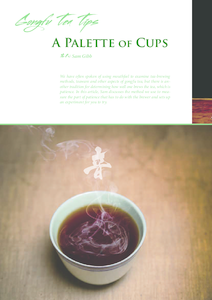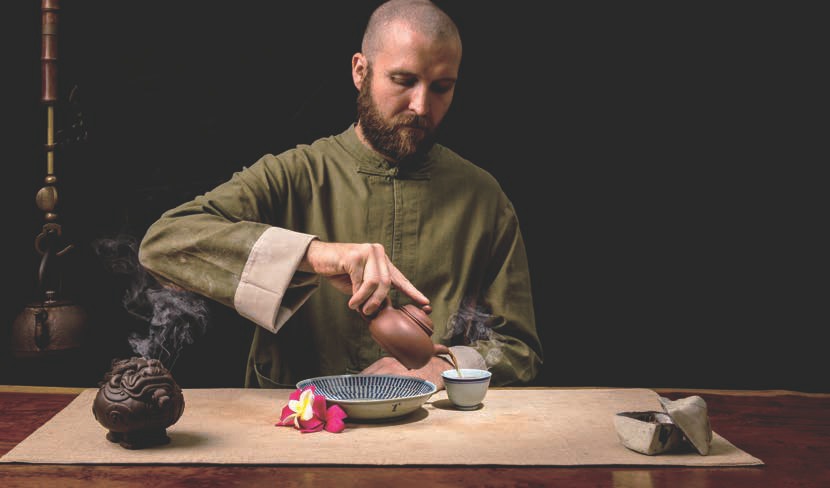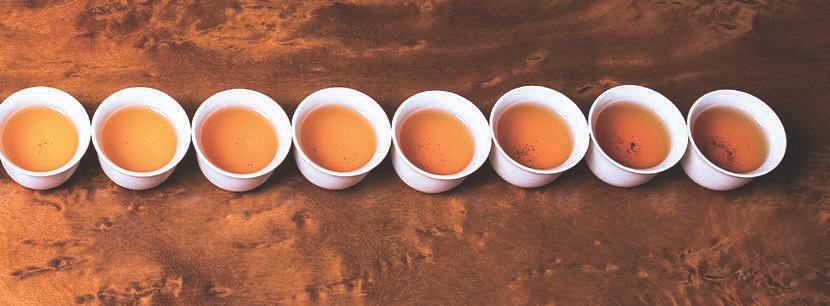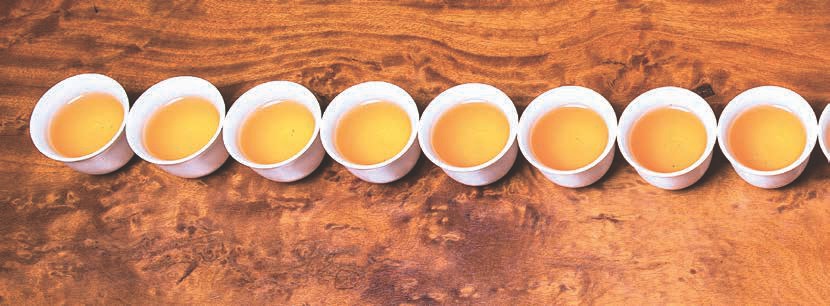
 |
|

We are often told that the practice of gongfu tea itself encapsulates everything we need to understand about method in this tradition. This is something we can never understand intellectually, only through experience. Years of practice, patience and guidance are required. And ultimately we must realize this poem applies to much more than just the tea table. Master Lin sums much of this poem up in saying, "if the temperature doesn't change from kettle to cup, and your movements are slow and graceful, you can steal the essence of the tea." This means that the more stable and fluid we are in our brewing, the finer the cup of tea. Beyond individual cups, the more we cultivate these skills over a whole session, the more consistency and longevity there is over the course of a session.
But how do we observe this? How can we test whether we are achieving this over a session? Obviously, month in and month out, we encourage you to practice your ability to detect the Ten Qualities of a Fine Cup of Tea. But there is another quality not listed in these ten, as it is not an aspect of mouthfeel: patience.
"Patience (耐泡)" refers to a tea's ability to be brewed for many steepings. Obviously, the number of steepings you get will be determined in part by the kind of tea you're brewing, but brewing skills (gongfu) play much more of a role than you'd think.
I have often heard Wu De say (and many of you have probably heard it, too) that you should be able to put a cup aside from every steeping of a session and then when they are all lined up at the end, it should look like the palette charts on the walls of an art studio: There should be a smoothness from start to finish, with no clear difference from cup to cup. All the colors slowly grade into each other. These changes do not happen suddenly, but slowly and evenly. As we line the cups out, we should see this slow and even evolution in steepings. This means the tea was prepared evenly, by a steady and skilled heart. It also means that, as Wu De always says, our guests will walk away with an impression of the tea itself - overall and complete, as opposed to various steepings that are all drastically different from one another. Having a whole, rounded session like this doesn't just mean your tea will be much more patient, it also means a better memory of the tea - consistent and true. We want our guests to feel as if they understand the tea they just drank.

I have often wanted to do this experiment. However, it seemed to require so much equipment! You would need at least ten identical cups, and twenty might even be better. (You could of course go for much longer!) I am lucky, as I live in a tea center surrounded by an abundance of teaware. However, for this reason, it never seemed useful as a gongfu experiment for the magazine, as most people could not try it at home. After seeing Shen undertake this experiment, I decided to try it and as I was doing it, I came up with a way that you could all join me, which I'll get to in a minute.
Normally this experiment is quite simple to do. You merely have your identical cups to one side and brew gongfu tea as you normally would. After each steeping, you set a new cup aside. As the session progresses, you will have a cup set aside from each steeping in the order in which you poured them. That way, you will have an amazing visual picture of the session and smoothness of your brewing skills.
But what if you don't have twenty identical cups lying around your house, I realized that you could use your phone and just photograph each cup, looking at the pictures afterwards. This way, you can swipe through the photos of your tea session and get a very clear idea of the colors. You will be amazed at the story these pictures will tell. It helps a lot if you have good lighting - just be sure to place the cup in the same place and hold the phone at the same height. Lighting changes or a different camera angle may affect the picture a lot. It helps to mark out the edges of the frame in the shot so you know where to put the cup and how high to hold the camera. This makes a surprisingly big difference in the pictures, so be sure to do it. I used small bits of tape. You can use anything to mark the spot where you place the cup each time. Of course, taking photographs isn't as nice as using cups, since it is distracting and requires time and can upset the balance of your mind. But it is better than not doing the experiment at all!
In many ways, this month's experiment steps outside the normal criteria, which use mouth sensations to judge effects. Instead, we use a visual method to gauge patience as a part of our gongfu skills. I found this way of assessing my brewing deeply insightful. We would love to hear how this month's experiment went for you, so please let us know by sharing your experiences on our website or social media.




